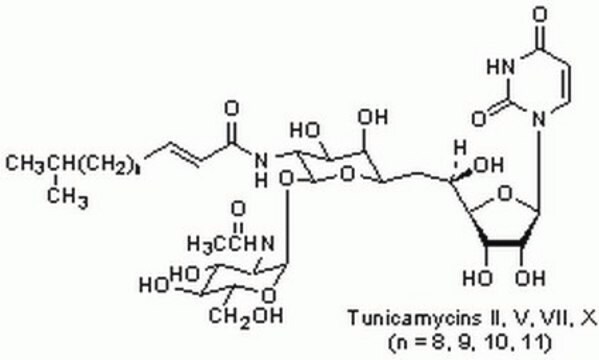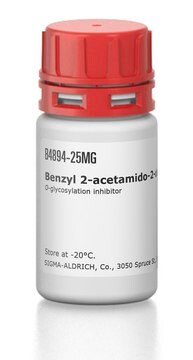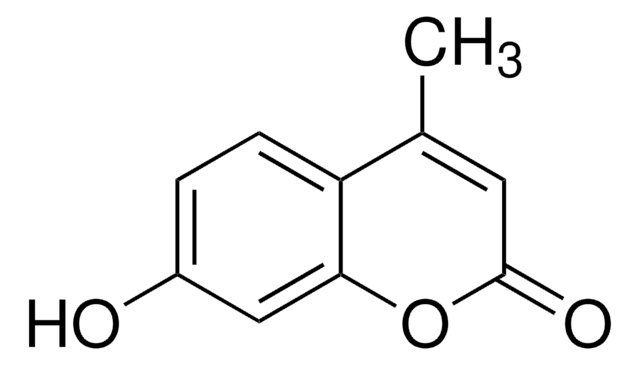T7765
Tunicamycin
from Streptomyces sp., ≥98% (HPLC), powder, N-acetylglucosamine transferase inhibitor
About This Item
Recommended Products
Product Name
Tunicamycin from Streptomyces sp.,
Quality Level
solubility
95% ethanol: soluble 1 mg/mL, clear to faintly hazy
THF: soluble <1 mg/mL
dioxane: soluble <1 mg/mL
DMF: soluble >10 mg/mL
pyridine: >10 mg/mL
DMSO: soluble 4.9-5.1 mg/mL, clear to slightly hazy, colorless to yellow
methanol: slightly soluble 4.9-5.1 mg/mL
methanol: soluble 4.9-5.1 mg/mL, clear to slightly hazy, colorless to yellow
acetone: insoluble
aqueous base: insoluble
chloroform: insoluble
ethyl acetate: insoluble
antibiotic activity spectrum
fungi
viruses
Mode of action
protein synthesis | interferes
storage temp.
2-8°C
SMILES string
CC(C)CCCCCCCC\C=C\C(=O)N[C@@H]1[C@@H](O)[C@@H](O)[C@@H](C[C@@H](O)[C@H]2O[C@H]([C@H](O)[C@@H]2O)N3C=CC(=O)NC3=O)O[C@H]1O[C@@H]4O[C@@H](CO)[C@H](O)[C@@H](O)[C@@H]4NC(C)=O
InChI
1S/C37H60N4O16/c1-18(2)12-10-8-6-4-5-7-9-11-13-23(45)39-26-30(50)27(47)21(54-36(26)57-35-25(38-19(3)43)29(49)28(48)22(17-42)55-35)16-20(44)33-31(51)32(52)34(56-33)41-15-14-24(46)40-37(41)53/h11,13-15,18,20-22,25-36,42,44,47-52H,4-10,12,16-17H2,1-3H3,(H,38,43)(H,39,45)(H,40,46,53)/b13-11+/t20-,21-,22+,25+,26-,27+,28+,29+,30-,31+,32-,33-,34-,35+,36+/m1/s1
InChI key
YJQCOFNZVFGCAF-WPTOCQRYSA-N
Looking for similar products? Visit Product Comparison Guide
General description
Application
Biochem/physiol Actions
Preparation Note
Signal Word
Danger
Hazard Statements
Precautionary Statements
Hazard Classifications
Acute Tox. 1 Oral
Storage Class Code
6.1A - Combustible acute toxic Cat. 1 and 2 / very toxic hazardous materials
WGK
WGK 3
Flash Point(F)
Not applicable
Flash Point(C)
Not applicable
Personal Protective Equipment
Choose from one of the most recent versions:
Certificates of Analysis (COA)
Don't see the Right Version?
If you require a particular version, you can look up a specific certificate by the Lot or Batch number.
Already Own This Product?
Find documentation for the products that you have recently purchased in the Document Library.
Articles
Inhibition of Cell Wall Biosynthesis by Antibiotics
Our team of scientists has experience in all areas of research including Life Science, Material Science, Chemical Synthesis, Chromatography, Analytical and many others.
Contact Technical Service









